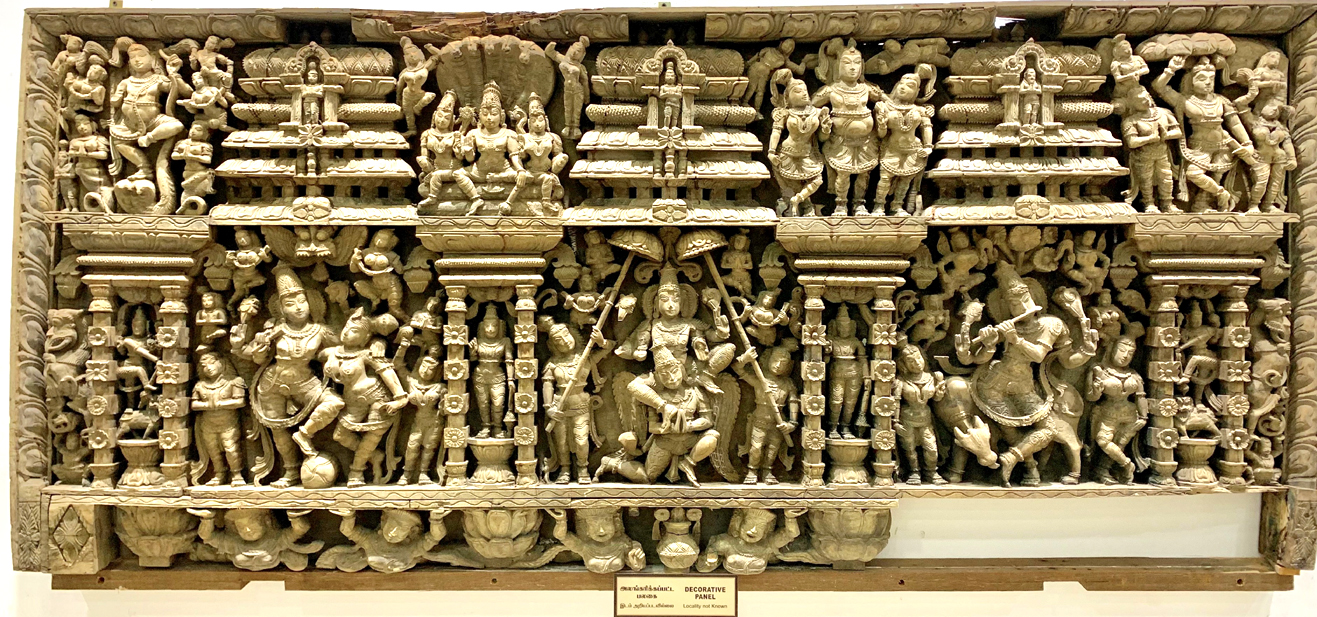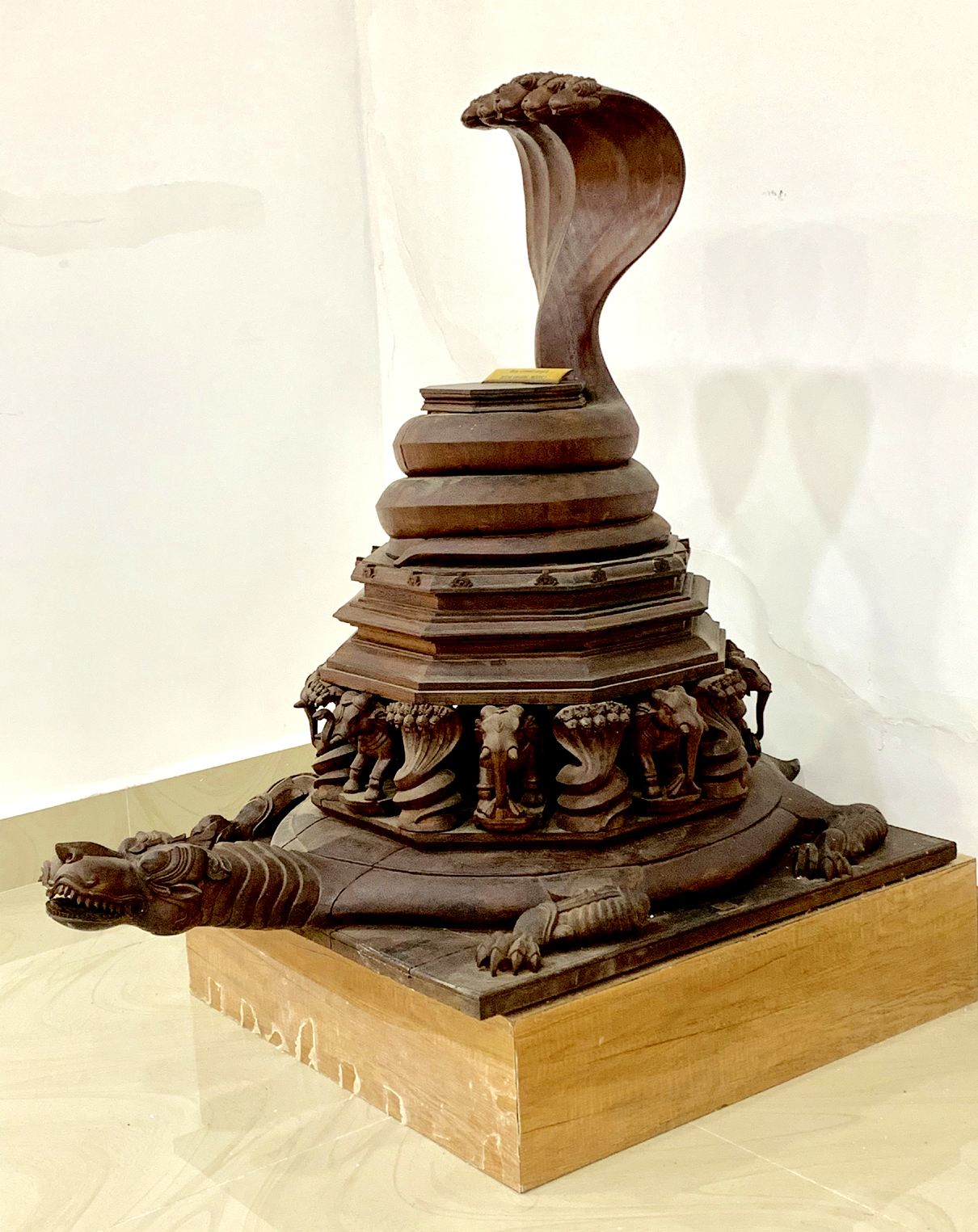Registered with the Registrar of Newspapers for India under R.N.I 53640/91
Vol. XXIX No. 14, November 1-15, 2019
Splendid exhibition of wood carvings
by Dr. Chithra Madhavan
by Dr. Chithra Madhavan
The Government Museum, Egmore had a splendid exhibition of wood carvings in September-October taken from its huge collection. The museum authorities had thoughtfully provided authentic and interesting titbits of information to visitors about the ther or rathas (temple-chariots) on which many of these sculptures were originally fixed. These rathas, which resemble the vimanam (superstructure above the sanctum) of temples, usually have about two hundred and fifty to three hundred wood carvings on them. The Manasara, a well-known treatise on temple architecture and sculpture, classifies the different types of sculptures found on a temple-chariot. Not only the incarnations and manifestations of Vishnu, Shiva and other deities, but also scenes from everyday life, animals, birds, plants, flowers and geometrical designs find a place on the rathas. It is believed that with a view to protect the wood vehicles, images of Ganesha, Karthikeya and Shiva Ganas were carved near the ther’s axle. These sculptures, crafted to perfection from the wood of the Mahua (Illupai) tree which is rich in oil content, could range from eight inches to about two and a half feet in height. The plaques on display further mention that texts such as Mahavishvakarmiyam, Rathalakshanam and Aparajitapricha describe how the rathas were made.
 The grand decorative panel which has Vishnu seated on Garuda who is about to fly at the centre, flanked by devotees holding umbrellas above the deity’s head.
The grand decorative panel which has Vishnu seated on Garuda who is about to fly at the centre, flanked by devotees holding umbrellas above the deity’s head.On display were a range of well-wrought carvings of various incarnations of Vishnu and manifestations of Shiva. Other than these sculptures, one of the eye-catching exhibits was a teakwood model of a Vaishnavite temple-chariot. The umbrella at the apex, demi-gods beneath, the different levels of the chariot, the guardians (dwarapalakas), yalis at the corners, Brahma as the charioteer, intricately carved wheels, et al., were minutely carved right down to the last detail in imitation of a real ratha. Another unique exhibit was a model of a Sesha-vahana (one of the many vahanas used in temple processions), with the base being a tortoise, flippers and all, above which, in a circle, are carved small images of the eight elephants and eight serpents (nagas) believed to hold up the universe. Atop this can be seen the serpent Sesha with multiple coils and five outspread hoods.
A grand decorative panel, also on display, was originally from a Vishnu temple. At the centre is Vishnu seated on Garuda who is about to fly, flanked by devotees holding umbrellas above the deity’s head and celestials hovering above, some holding garlands. In two small niches on either side of this carving are dwarapalakas as they are seen at the entrances to the sanctums of temples. To the left of this sculpture is another carving on the same panel, of four-armed Krishna playing the flute (Venugopala), with consorts and a cow licking the sole of a foot. To the right is Vishnu with Lakshmi. The expressions on the faces of the deities and devotees, jewels, clothes and every other detail are very clearly seen.
These wood carvings are simply brilliant. We wonder who these anonymous sculptors were.
 A model of a Sesha-vahana.
A model of a Sesha-vahana.


wonderful